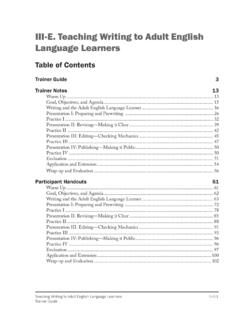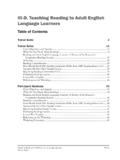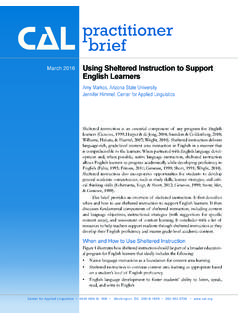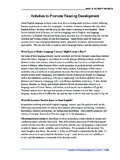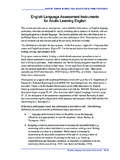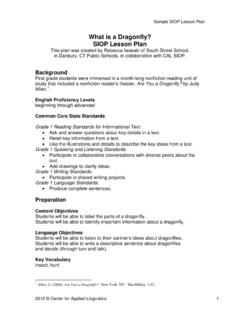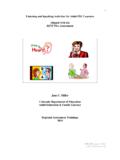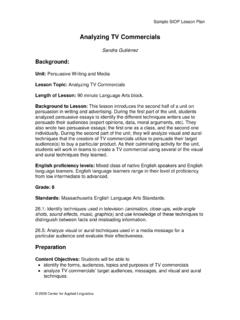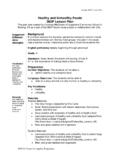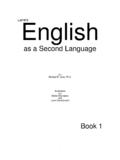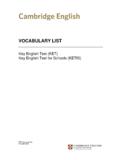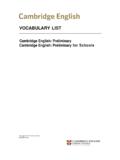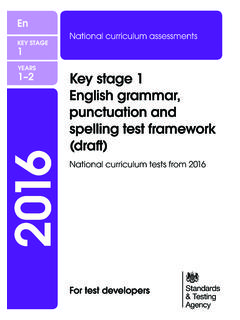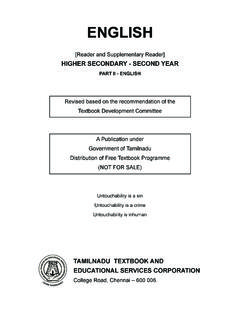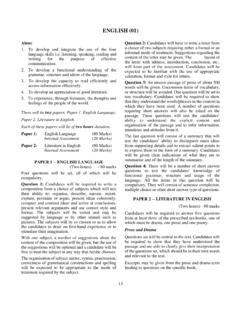Transcription of Student Oral Language Observation Matrix (SOLOM)
1 Student oral Language Observation Matrix (SOLOM) The SOLOM is not a test per se. A test is a set of structured tasks given in a standard way. The SOLOM is a rating scale that teachers can use to assess their students ' command of oral Language on the basis of what they observe on a continual basis in a variety of situations - class discussions, playground interactions, encounters between classes. The teacher matches a Student 's Language performance in a five mains - listening comprehension, vocabulary, fluency, grammar, and pronunciation - to descriptions on a five-point scale for each (See Figure 1). The scores for individual domains can be considered, or they can be combined into a total score with a range of five through 25, where approximately 19 or 20 can be considered proficient. SOLOM scores represent whether a Student can participate in oral Language tasks typically expected in the classroom at his or her grade level.
2 Because it describes a range of proficiency from non-proficient to fluent, the SOLOM can be used to track annual progress. This, in turn, can be used in program evaluation, and as some of the criteria for exit from alternative instructional programs. However, to be used for these purposes, it is important to ensure that all teachers who use it undergo reliability training so that scores are comparable across teachers. For this purpose, a training video has been produced by Montebello School District in California. The SOLOM does not require a dedicated testing situation. To complete it, teachers simply need to know the criteria for the various ratings and observe their students ' Language practices with those criteria in mind. Therein lies the greatest value of the SOLOM and similar approaches: it fixes teachers' attention on Language -development goals; it keeps them aware of how their students are progressing in relation to those goals; and it reminds them to set up oral - Language -use situations that allow them to observe the Student , as well as provide the students with Language -development activities.
3 While observing, teachers should be attuned to the specific features of a Student 's speech that influenced their rating. They can use this information as a basis of instruction. The SOLOM is sufficiently generic to be applicable to other Language besides English. The SOLOM is not commercially published. It was originally developed by the San Jose Area Bilingual Consortium and has undergone revisions with leadership from the Bilingual Education Office of the California Department of Education. It is within the public domain and can be copied, modified, or adapted to meet local needs. Directions for Administering the SOLOM: Based on your Observation of the Student , indicate with an "X" across the category which best describes the Student 's abilities. The SOLOM should only be administered by persons who themselves score at level "4" or above in all categories in the Language being assessed.
4 students scoring at level "1" in all categories can be said to have no proficiency in the Language . SOLOM Teacher Observation Student oral Language Observation Matrix Student 's Name: Grade: Date: Language Observed: Administered By (signature): 1 2 3 4 5 A. Comprehension Cannot be said to understand even simple conversation. Has great difficulty following what is said. Can comprehend only social conversation spoken slowly and with frequent repetitions. Understands most of what is said at slower-than-normal speed with repetitions. Understands nearly everything at normal speech. Although occasional repetition may be necessary. Understands everyday conversation and normal classroom discussions.
5 B. Fluency Speech so halting and fragmentary as to make conversation virtually impossible. Usually hesitant: often forced into silence by Language limitations. Speech in everyday conversation and classroom discussion frequently disrupted by the Student 's search for the correct manner of expression Speech in everyday conversation and classroom discussions generally fluent, with occasional lapses while the Student searches for the correct manner of expression. Speech in everyday conversation and classroom discussions fluent and effortless; approximating that of a native speaker. C. Vocabulary Vocabulary limitations so extreme as to make conversation virtually impossible. Misuse of words and very limited: comprehension quite difficult. Student frequently uses wrong words: conversation somewhat limited because of inadequate vocabulary. Student occasionally uses inappropriate terms and/or must rephrase ideas because of lexical inadequacies.
6 Use of vocabulary and idioms approximate that of a native speaker. D. Pronunciation Pronunciation problems so severe as to make speech virtually unintelligible. Very hard to understand because of pronunciation problems. Must frequently repeat in order to make him/herself understood. Pronunciation problems necessitate concentration on the part of the listener and occasionally lead to misunderstanding. Always intelligible, although the listener is conscious of a definite accent and occasional inappropriate intonation patterns. Pronunciation and intonation approximate that of a native speaker. E. Grammar Errors in grammar and word order so severe as to make speech virtually unintelligible. Grammar and word order errors make comprehension difficult. Must often rephrase and/or restrict him/herself to basic patterns. Makes frequent errors of grammar and word order that occasionally obscure meaning.
7 Occasionally makes grammatical and/or word order errors that do not obscure meaning. Grammar and word order approximate that of a native speaker.
